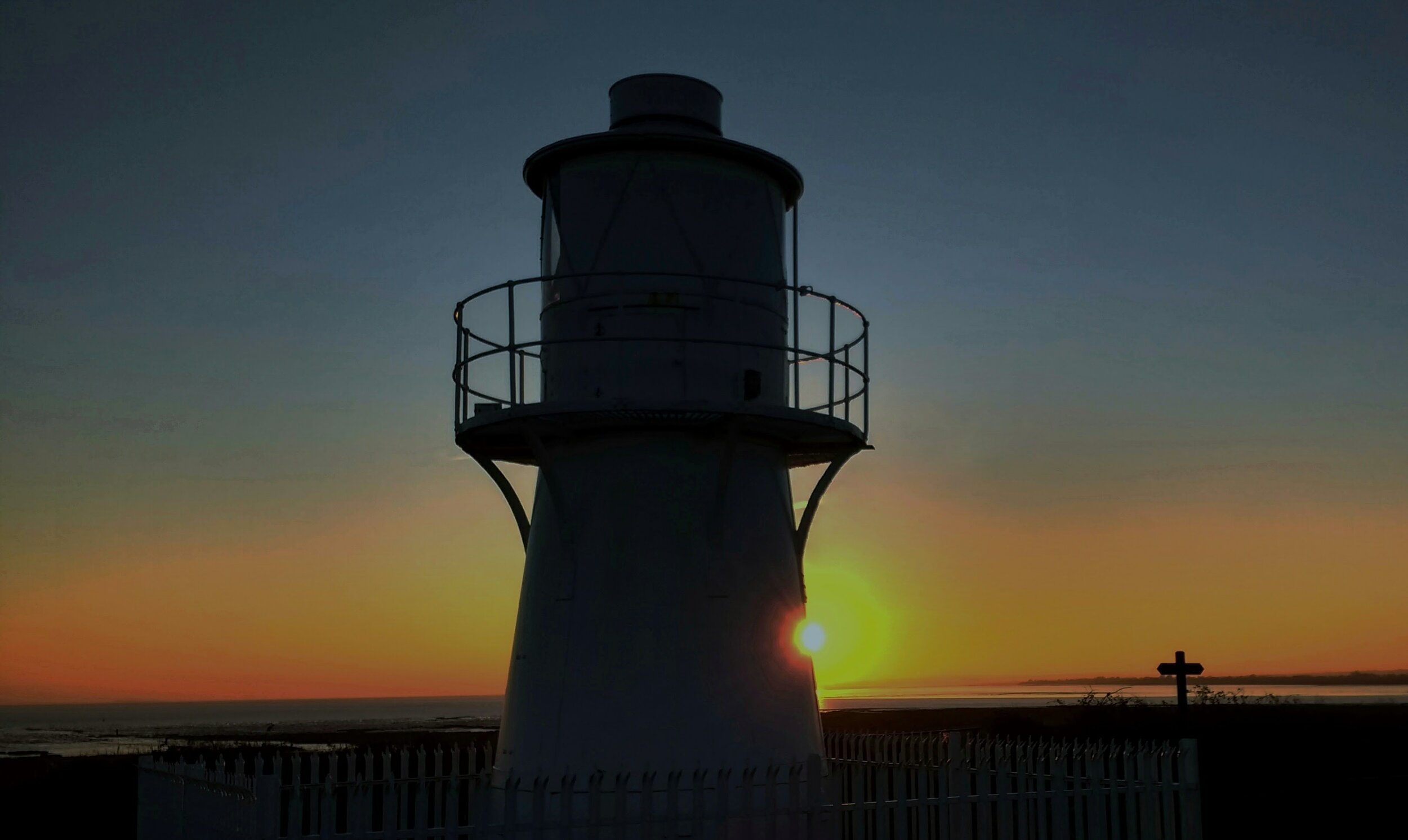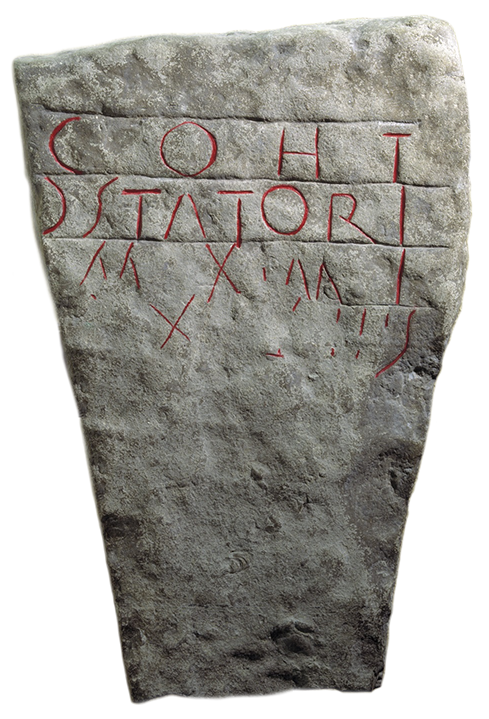In 1878, an inscribed Roman era stone, known as the 'Goldcliff Stone', was discovered near the sea wall at Goldcliff.
The inscription on the small limestone block reads “COH I, C STATORI, M…XIMI, P X…XIII S”, which has been translated as “From the first cohort, the century of Statorius Maximus (built) 33 1/2 paces…”. It probably records either the building of a section of embankment or a drainage ditch by Roman soldiers of the first Cohort of the Second Augustan Legion based at Caerleon, led by Centurion Statorius Maximus.
In 43 CE, the Romans invaded Britain. By 48 CE the legions had reached the border of Wales and began subjugating the Welsh tribes.
In 75 CE, after a difficult campaign, the dominant tribe in South Wales, the Silures, were defeated by the Roman general Julius Frontinus. To strengthen their control of the region, the Romans built a fortress at Isca (modern day Caerleon), one of only three permanent legionary camps in Britain. The fortress was home to 5000 soldiers and contained barracks, workshops, granaries, bath houses, a harbour and a large amphitheatre.
Legionary standard of the 2nd Augustan Legion
The fortress was the headquarters of the 2nd Augustan Legion and was in use for almost 300 years, until about 375 CE, when it was abandoned as a military base. At about this time, the legion was transferred to Richborough in Kent to protect the coast from Saxon raiders.
Sometime around 100 CE, the Romans began to enclose and drain the Levels, probably to create year-round grazing for cattle and cavalry horses on the lush, wet grasslands. Roman military engineers built embankments along the shoreline, linking areas of higher ground, and created a network of ditches to drain the land. At this time, the sea wall was probably a series of low embankments protecting sections of the Levels, rather than a continuous single structure (sea levels at this time were about 1.5m lower than today).
It was common practice for Roman soldiers to record their building efforts by inscribing a stone, called a centurial stone, which would be placed next to (or in the case of a building, in) their construction. The Goldcliff Stone is thought to date from the late 2nd or early 3rd century.
For more information about the Romans in south Wales, and to see a replica of the Goldcliff Stone, visit Newport Musuem.
For more information about Caerleon and the Roman fortress, visit the National Roman Legion Museum.
For more information about the Goldcliff Stone, visit Roman Inscriptions of Britain.
Replica of the Goldcliff Stone, Newport Museum
Cohortis I
Centuria Statori
Maximi
Passus XXXIII Semis
- Goldcliff Stone inscription









![Wesleyan Methodist chapel Castleton (Penny Gregson)[2].jpg](https://images.squarespace-cdn.com/content/v1/5a1d5fb38a02c70db7c34f81/fe4960cd-db68-469d-8411-f5e21327e383/Wesleyan+Methodist+chapel+Castleton+%28Penny+Gregson%29%5B2%5D.jpg)


